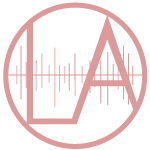Have you ever been told that you have a captivating voice or an exceptional ability to bring words to life? If so, you might want to consider turning your vocal talents into a profitable career by starting a voice-over business. Voice over work is in high demand across various industries, including advertising, entertainment, e-learning, and more. In this article, we will guide you through the essential steps to kickstart your versatile voice-over business successfully.
Self-assessment and Skill Development
Before diving into the world of voice-over, it’s crucial to assess your strengths and weaknesses. Take some time to understand your unique vocal qualities. Are you great at character voices, narration, or commercial scripts? Recognizing your niche will help you market yourself effectively.
Additionally, consider investing in voice-over training or workshops to hone your skills. Many online platforms and local schools offer courses that can help you improve your voice control, articulation, and script interpretation. There are a multitude of amazing voice over coaches online. Luckily with platforms such as Zoom, Microsoft Teams and Skype there’s no excuse why you can coach with the best in the world from the comfort of your home.
I got started with my business coaching with Marc Cashman for Commercial voice over. I then coached with Thom Pinto for Corporate Narration and Documentaries, lastly with Elle Ray Hennessey for Animation. Coaching is a life-long development plan in voice over. Even the best actors in the world coach throughout their career. So consider taking classes each year to enhance your acting skills.
Build a Home Studio
Creating a professional home studio is one of the most critical steps in starting a voice-over business. To begin, you’ll need the following equipment:
– A high-quality microphone
– Pop filter
– Headphones
– Soundproofing materials (e.g., foam panels)
– Digital audio recording and editing software (e.g., Adobe Audition, Pro Tools)
– A reliable computer
– A quiet and well-insulated recording space
Investing in quality equipment is essential, as your voice recordings must sound professional and clear. You can find a variety of microphone options to suit different budgets, but make sure to do thorough research before making a purchase. When starting my voice over business I did a solid four months of research before diving in.
Develop a Portfolio
To attract clients, you’ll need a compelling voice-over portfolio that showcases your range and capabilities. Create sample recordings that demonstrate your versatility. Include various styles such as commercials, narration, character voices, and more. These samples should be polished and of the highest quality. There is several websites that have free scripts available for you to use to create your own demos. Alternatively, you could also write your own scripts.
Most industries experts suggest starting with a Commercial demo. Use 5-6 15-20 second clips showcasing your versatility in acting.
If Animation is your dream consider starting with an animation demo showcasing a variety of characters, some hyper, some relaxed, the more variety the better.
Marketing and Branding
Establishing a strong online presence is crucial for your voice-over business. Create a professional website that features your portfolio, contact information, and a brief biography. As well write as many articles as you can using key voice over words and SEO in order for buyers to find you on search engines such as Google. Use social media platforms like LinkedIn, Twitter, and Instagram to connect with potential clients and fellow voice-over artists. You can start your business with websites such as a WIX site, or if you prefer to be more niche Voice Acting Websites is a great company that specializes in voice acting websites.
Consider branding yourself with a unique name and logo. A memorable brand can help you stand out in a competitive market. Choose a logo that really speaks to your talent, integrity and goals.
Networking
Networking is an integral part of the voice-over industry. Attend industry events, join online forums, and engage with professionals in the field. Building relationships with fellow voice actors, agents, and potential clients can open up opportunities for collaborations and job offers. There are more industry events than ever to meet other voice actors and buyers in the market. Use them to your advantage.
Market Research and Pricing
Understanding the voice-over market is essential for setting competitive rates. Research industry standards and the rates charged by voice-over artists with similar experience and skill levels. Don’t undervalue your services, but be realistic about your pricing, especially when you’re just starting. Websites such as Gravy for the Brian, VO Network and GVAA Rate Guide have rate guides that can familiarize yourself with the going rates in the voice over industry.
Audition and Job Hunting
Join online platforms like Voices.com, Fiverr, or Upwork, which connect voice-over artists with clients seeking their services. These platforms offer a wealth of audition opportunities and can be an excellent way to kickstart your career. This is how I got my start in voice-over. I started with a voices.com membership and slowly but surely, I began to build up my voice-over portfolio and from that I was able to acquire multiple international agents.
Legal and Financial Considerations
Consult with a legal professional to determine the best business structure for your voice-over business, whether it’s a sole proprietorship, LLC, or corporation. Ensure that you have proper contracts in place for your clients to protect your interests.
Keep meticulous records of your income and expenses, as you will need them for tax purposes. Also educate yourself on the tax write-offs for voiceover. Choose a tax consultant that you trust and or specializes in the entertainment business.
Conclusion
Starting a voice-over business can be a rewarding endeavor, combining your passion for voice acting with the potential for financial success. With dedication, continuous self-improvement, and a strong online presence, you can establish yourself as a reputable voice-over artist and thrive in this competitive industry. Remember that building a voice-over career takes time, persistence, and a commitment to delivering high-quality work to your clients.
